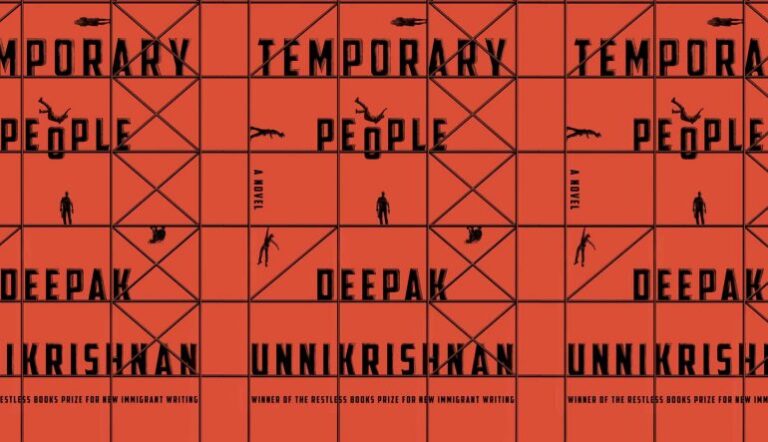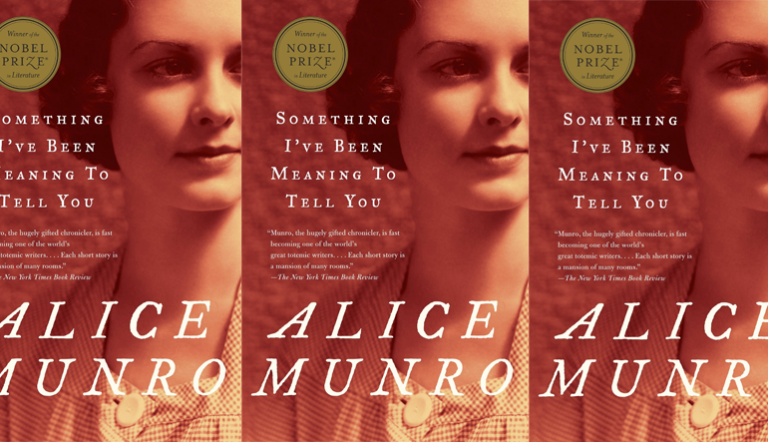The Peninsula of Lost Youth

Each time I bathe in one of Florida’s natural springs, the cooling waters—eternally seventy-two degrees—imbue in me a feeling of profound irony. The notion that Ponce de Leon came seeking the mythical Fountain of Youth here but never found it is simply untrue. Florida’s springs, rising up through porous bedrock, are collectively a life force. Not only is the Floridan aquifer the source of the state’s drinking water, but swimming in the springs would add a couple of weeks, easy, to the lives of even the hardest among us. The irony isn’t that we Floridians want to pillage this source of life, though—we possess it and are somehow getting older.
The Villages, an age-restricted community less than an hour’s ride from the springs, is the highest concentration of retirees in the world. In the last decade it was the fastest growing metropolitan area in the whole United States. The rest of the state has followed suit. According to US Census data, Florida’s a national leader in projected population growth and is a top-five state in percentage of residents aged over sixty-five. Retirees have always accounted for a significant portion of Florida’s population, but the baby boomer generation is moving here in numbers much higher than ever before. As Florida continues to grow into its role as the ultimate playground for the elderly, its luster of youth fades away.
I usually make my way from Miami to the springs of Central Florida in conjunction with a visit to my childhood friend—let’s call him Jim. He’s decamped from the big city to a cabin in the woods. I’m not at liberty to say exactly where because, especially during a global pandemic, he’d like to keep his retreat exclusive. By retiring to the countryside, I often joke with Jim, he’s made the leap from a spry thirty years old to a lumbering sixty-five seemingly overnight, eschewing the salad days of youth for the stews and porridges of twilight.
As a young man, just a few years ago, Jim recommended me the fiction of the author John Brandon. His 2010 novel, Citrus County, set in the eponymous Florida Gulf Coast region, deals with the loss of youth in both the figurative and literal sense. The tween protagonists, Toby and Shelby, are wayward. Toby’s parents are gone, and he lives with his abusive, hemlock-huffing uncle in a trailer off the highway. He’s over being a teenager. Brandon writes, “He wished he could skip the next years of his life, skip to the point when he would be his real self, whatever that would be.” Might it be that this character is not just sad but a real bastard out of Florida? Without parents, Toby was raised by the state’s wilds.
Meanwhile, Shelby’s just moved down to Citrus County from Indiana with her sister, Kaley, and their single father. Her disaffection lies not in a sunburnt malaise, but in her interest in Toby. “She understood that her attraction to Toby was clichéd,” Brandon writes. “Regular boys were boring. There wasn’t a way regular boys could make her feel that she couldn’t feel on her own.” Toby, however, is beyond irregular. He’s Florida irregular. The hot sun, sea salt, and noxious detritus have warped his mind. His disassociation underwrites their budding romance. In an attempt to finally have control over his life, Toby decides to kidnap Shelby’s sister and keep her in a shed in the woods near his uncle’s trailer.
Shelby isn’t clueless. In fact, she’s right on when she assesses Toby. “It seemed,” Brandon writes, “there was something about him you couldn’t know right away.” This diagnosis, coupled with the fact that Toby wants to “possess a secret that puts him above his uncle and his teachers and Coach Scolle and all the convenience store clerks and all the nameless punks of Citrus County who thought knocking over mailboxes and stealing cigarettes would save them,” make him dangerous. Toby’s darkness is endemic to his surrounds. Shelby sees it, but not for all its parts. Like many youths in Florida, Shelby eventually learns how danger can be so near and present yet seem so far away from reality.
Indeed, lurking just beyond each chain-linked fence, crawling stealthily along each state road behind mazes of subdivisions, danger may lie in wait. When I interviewed Kristen Arnett for Saw Palm in 2017, we discussed just this thing. I asked her why in her first collection of short stories, Felt in the Jaw, there were no alligators, despite the book bearing a drawing of an alligator skull on its cover. She responded, “In so much of Florida stuff, there’s an implied alligator.” The Implied Alligator is the perfect heuristic device for understanding the potential danger that is constantly present in Florida.
Arnett’s 2018 short story, “Graveyard Game,” is a good example of the Implied Alligator. The story is about Ginny, a recently divorced mother of two girls, Gail and Sasha, and her observations of their new central Florida home. The girls have taken to playing a game with their neighborhood friends where they play dead. Last one buried alive wins. They had been playing the game in the girls’ yard but moved it offsite. Ginny becomes curious and follows the group one day to the end of their cul-de-sac. “Three houses are set back at the end,” Arnett writes, “ranch-style mirrors of each other in sherbet Florida hues: pale pink, green, and blue. Her girls lead the others directly between the green and blue homes and climb over the chain link fencing, disappearing into the overcrowded palm scrub. The brush swallows up the line of them like they were never there.” Just beyond the pastel lining of suburbia lies an earth that Arnett describes as “forever damp and mucky, and notoriously full of roaches.” Scrub and roaches. The girls can disappear in the blink of an eye. Like Citrus County, “Graveyard Game” demonstrates that danger lurks just beyond developed land.
In both of these stories, against all odds, the kids make it through only somewhat scathed. This isn’t how childhood should be, though—survival despite the elements. Not in a model world. And isn’t a model world what Florida sells to its new residents on a daily basis?
Florida as we know it is the final frontier, the American West just later bloomed. Once attempts began to civilize it, they never ceased. Civilization came in the form of exponential real estate development. Developers learned that they could create more sites by hacking away at the natural landscape and sewing it back together. The goring of Florida is why we who live here hold a fascination with the macabre, and why the rest of the nation holds a fascination with us. Violence is the currency Florida men have traded on for centuries. Only those who’ve lived long enough to lose their fear of it would be willing to retire here. When recessions hit, however, many of the developments are aborted, and their remains are a haunting reminder to the state’s youth and the peril their futures hold. Each site is its own Implied Alligator—so close to being fully developed centers for living but instead monumental necropolises. Isn’t that just like Toby’s soul in Citrus County?
Brandon’s protagonist is no stranger to the essence of his home state. He sees it every day. “Toby exited the school and hiked into the February woods,” Brandon writes. “He passed a clear-cut area pocked with piles of fill sand, a golf course whose construction had been halted years ago.” Living amongst such landscapes would exacerbate any problems an already affected youth like Toby would have. He walks among hopelessness.
Unconsummated developments serve as landscape, but ironically, in keeping with the idea of unexpected danger, it is also the most overwrought developments that jeopardize Florida’s youth. The most obvious Implied Alligator in all of Florida? Theme parks. There’s a Wikipedia page dedicated solely to the incidents that have taken place at Disney World over the years. Each separate section of the park has its own tab on the page. Some notable crises include a loaded pistol being discovered on the Dinosaur ride in Disney’s Animal Kingdom and a handful of deaths by not only drowning in Disney’s River County water park, but also by brain-eating amoeba. Most recently—and most widely reported—a toddler was standing near a pond at Disney’s Grand Floridian Resort, when a very tangible alligator grabbed him and dragged him into the water, to his death.
In Citrus County, though theme parks have nothing necessarily to do with the plot of the story, John Brandon makes sure to call attention to their existence. “A little girl’s body was found in a scrub habitat across from Buccaneer Bay,” he writes, “a small water park located in the next county south.” The line serves not only as a nod to this genre of Florida hellscape, but a clue into where the story is set. A theme park with a buccaneer theme in Florida could only be near Tampa, famous for its pirate history. Brandon wasn’t a visionary adding the detail of this little girl’s death to his story—he had a long history of such incidents to trade on. There have been stabbings in Tomorrowland, drownings at Cinderella’s Castle, and heart attacks on Space Mountain.
A theme park is the setting of another notable piece of Florida fiction, C.H. Hooks’ 2019 novel, Alligator Zoo-Park Magic. The book follows a group of young adults. They eat at Waffle House, drink beer and go to work at an alligator zoo-park, but mostly they follow around their friend, the Magnificent Jeffers, and observe all of his bizarre exploits. The zoo-park should be a fun place for youth, but “Kids went missing all the time” from it, Hooks writes. “Alligators snatched up a few—bears, step-dads, clowns, snatched up others. Hell, whole families left sometimes, middle of the night.” This is as quintessential a Florida setting as possible. Who ever conceived of such a place, and what is it about it that brings out the absolute worst in us?
In an opening scene, as a trick, Jeffers disappears into the jaws of a notorious gator. “All I saw was splashing and a bundle of little gators rearranging after all the excitement, and a stream of bubbles,” Hooks writes. “It could have been the spring welling up or Jeffers’ last breath. I kneeled down on the bank and got the knees of my pants good and muddy trying to digest what I just saw.” That the bubbles could be the source of Florida’s life or a sign of death demonstrates how close we Floridians are to the edge. Jeffers survives this and other dangerous stunts—amongst others, he walks into a waterspout that collapses over him in a gentle rain shower. But it’s Jeffers’ final stunt that is most noteworthy. Evil Knievel-style, he’s behind the wheel of a super-charged a van and is going to launch it full speed down a local racetrack. When the van explodes and takes off like a rocket, most assume it’s his most spectacular stunt to date. But, Hooks writes, “He vanished. In the heat from the heap of melty metal I looked up and swear the sun started bouncing around the late-afternoon sky. Jeffers had knocked one final trick out of the park before he left for good. But that was the trick. He disappeared without a trace. Sure, they thought they found some teeth, but for real, that wasn’t Jeffers.” The crowd is mesmerized, thrilled to watch the very real death of Jeffers. In Hooks’ novel, the adult observers have even bought into the fantasy of a magical juvenile. They are a crazed sadistic bunch of Floridians, desensitized to the death of their youth.
Floridian literature provides us with some evidence that the state’s aggressive setting takes an occasional youth back as a tax, like a spiteful Old Testament god. This is the same god that haunts every scrub habitat, clear-cut forest, abandoned development site, or drained swamp in Florida. The state, however, is a fantastic place for those who survive. We can look back on our scrapes fondly, not knowing just how close we came to death.


